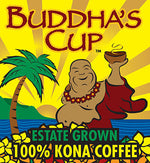Hibiscus tea leaf is a staple among tea lovers, known for its vivid red hue and tangy flavor. Want to make it even better? Try adding cinnamon and anise flowers for a touch of sweetness and depth.

Essential Ingredients and Equipment for Brewing Hibiscus Tea
Brewing the perfect hibiscus tea? Grab some deep red hibiscus calyces, a stick of Ceylon cinnamon for a sweet touch, and anise flowers for a licorice-like twist. Together, these create a rich, tart, and complex cup of tea.
How to Select the Best Hibiscus Petals for Your Tea

Before you toss any hibiscus tea flowers in your pot, let’s talk about quality. You may not know this, but there are many hibiscus tea leaf varieties.
Some are specifically grown for their beautiful blooms. In contrast, others, like Hibiscus Sabdariffa, are cultivated for their deep red calyces — the fleshy part of the flower used to make hibiscus tea.
These calyces, particularly the deep red ones, are richer in flavor (like tart berries) and antioxidants, including hibiscus acid, which offers some health benefits.
Enhancing Hibiscus Tea with Cinnamon Sticks for Added Flavor

Cinnamon adds a touch of warmth and subtle sweetness that perfectly complements the tartness of hibiscus. But with so many available varieties, which are best for your tea?
There are two main types of cinnamon: cassia cinnamon and Ceylon cinnamon. Cassia is the more common kind with a strong, spicy kick, whereas Ceylon is known for its lighter, sweeter taste.
You will likely prefer Ceylon for hibiscus tea, as it's more gentle on the flavor buds and won't overpower the delicate hibiscus.
Here’s how to choose the perfect cinnamon stick:
- Look for smooth, unblemished sticks. These tend to be fresher and more flavorful.
- Feel for firmness. A good cinnamon stick should feel firm and snap easily when broken. Avoid soft or crumbly sticks.
- Consider the thickness. Thicker sticks are often more pungent. Opt for medium-sized sticks for a balanced flavor.
- Break it up (optional). Break the stick into smaller pieces before steeping if you prefer a stronger cinnamon infusion.
Exploring the Unique Flavor of Anise Flower in Tea Blends
An anise flower (not to be confused with star anise) adds a surprising touch of licorice-like magic to hibiscus tea. This flavor complements the tartness of hibiscus beautifully.
Finding anise flowers might require a trip to a specialty store. For the best results, look for whole, star-shaped anise flowers.
Add a few whole flowers directly to your teapot or steeper, along with the hibiscus and cinnamon. A little goes a long way with anise, so start with a small amount and adjust to your taste preference.
As a convenient alternative, we offer hibiscus tea that is already infused with anise and cinnamon – give it a try!
Guide to Preparing and Handling Hibiscus Tea Leaves
To improve your tea experience, select vibrant, whole hibiscus flowers and store your ingredients in airtight containers in a cool, dark place. This ensures maximum flavor and freshness for your cinnamon sticks and anise seeds.
Tips for Choosing High-Quality Hibiscus Flowers
Choosing the freshest hibiscus flowers makes a difference in your tea’s flavor. Here’s how to spot top-notch flowers:
- Look for a vibrant red color. Deep red calyces (the fleshy part of the flower) tend to be richer in flavor and antioxidants. Avoid flowers with dull or brownish tones.
- Whole flowers with minimal dust or debris are ideal. Broken pieces may indicate lower quality or improper storage.
- The flowers should be dry to the touch but not brittle. If they crumble easily, they’re likely past their prime.
Buddha’s Cup has a variety of teas and coffees that you can buy today.
Best Practices for Storing Tea Leaves to Maintain Freshness and Flavor
Like other pantry staples, proper storage will maintain the flavor and aroma of your ingredients. Here’s how to keep them fresh:
- Transfer your tea leaves, cinnamon sticks, and anise seeds to airtight containers. This will prevent them from absorbing moisture and odors from other foods.
- Store your containers in a cool, dark place away from the sun. A pantry shelf away from the stove or oven is perfect.
- Whole spices, like cinnamon sticks, tend to stay fresher longer than ground spices. If you prefer ground cinnamon, purchase it in small quantities and store it in the refrigerator for up to 6 months.
You Might Like: Discovering 5 Health Benefits of Using Hibiscus Tea
Achieving the Perfect Flavor Balance in Hibiscus Tea
When brewing your tea, start with a lighter touch, especially with an anise flower, as its licorice flavor is quite strong.
A good beginning recipe is 1-2 tablespoons of dried hibiscus flowers, one medium-sized cinnamon stick, and 1-2 whole anise flowers. Adjust these amounts to suit your taste.
For a tartier flavor, add more hibiscus. If you prefer a stronger cinnamon note, break the cinnamon stick into smaller pieces. Remember, it's easier to add more ingredients, but you can't remove them once they're in.
Find your perfect cup of tea and shop from Buddha’s Cup’s tea collection.
Techniques for Mastering the Art of Tea Steeping

Creating the perfect cup of hibiscus tea comes down to mastering the art of steeping. The secret lies in the temperature of the water and how long you steep it for.
Hibiscus tea thrives in hot but not boiling water. Aim for around 195°F (90°c) to 200°F (93°C) — just off a rolling boil. Boiling water can make the tea taste harsh. Steeping time is key. For a balanced flavor, aim for 5-7 minutes.
Want it stronger? Steep a bit longer. Prefer it milder? Steep less or use less hibiscus. For a fancy touch, use a tea strainer to scoop out the hibiscus flowers and spices after steeping. This keeps your tea from getting too strong and bitter.
The Health Benefits of Hibiscus Tea for Wellness
Hibiscus tea is a tasty tonic for your health, rich in antioxidants and Vitamin C. Boosted with cinnamon for blood sugar management and anise flowers for digestion, it's a blend that truly nourishes body and soul.
Nutritional Benefits of Hibiscus Tea
Did you know that hibiscus tea gets its red hue from anthocyanins? These powerful antioxidants help protect your cells from damage and reduce the risk of chronic diseases.
Hibiscus also contains a lot of Vitamin C, a vital nutrient for a healthy immune system. Vitamin C helps your body produce white blood cells, which are important for fighting infection and illness. It also helps your body absorb iron, which is essential for carrying oxygen throughout your body.
Health Benefits of Cinnamon and Anise Flowers in Herbal Teas

The health benefits of hibiscus tea get even more interesting when you add cinnamon and anise flowers.
Cinnamon has been linked to helping manage blood sugar levels by increasing insulin sensitivity and also helping reduce inflammation throughout the body. This is helpful for people diagnosed with diabetes or arthritis.
On the other hand, anise flowers have traditionally been used to soothe upset stomachs and ease digestion. It also helps clear congestion and ease coughs.
Sources: National Library of Medicine, RxList
Curious to taste hibiscus tea with a cinnamon and anise boost?
Brewing hibiscus tea with cinnamon and anise flower is a simple way to boost its flavor and health benefits. This combination infuses the tart hibiscus with sweet and spicy notes, making your tea time a rich, sensory experience. So next time you're steeping a cup, add a little cinnamon and anise for a fun twist.
Start enjoying your tea time more with Buddha's Cup.
Have questions? Contact us today.
FAQs
What are the benefits of hibiscus tea leaf?
Hibiscus tea leaf is loved for its vibrant red color, tangy taste, and high antioxidant content that helps lower blood pressure and boost cardiovascular health.
How does pure leaf tea enhance the flavor of hibiscus tea?
Pure leaf tea allows the full flavor and aroma of the hibiscus and ingredients like cinnamon and anise to fully develop, creating a richer sensory experience.
Can I add anise flowers to my hibiscus tea?
Yes, adding anise flower to hibiscus tea adds a subtle licorice flavor that enhances the tea's tangy taste.
What unique flavors do anise flower and cinnamon bring to hibiscus tea?
Anise flower introduces a licorice flavor, while cinnamon adds warmth and sweetness, balancing the tartness of hibiscus for a more complex taste.
What are the health benefits of drinking hibiscus tea with anise flower and cinnamon?
Drinking hibiscus tea with anise flower and cinnamon can aid digestion, reduce inflammation, and help regulate blood sugar.













